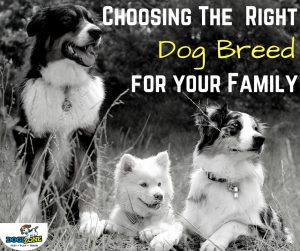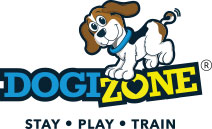Choosing The Right Breed Of Dog For Your Family
 If you were to talk to 50 dog owners, you would probably hear of the virtues of 50 different breeds of dogs to have as a family pet. In reality, there are only a few breeds that are not a good match for families and these tend to be rare breeds that are not typically dogs that will be readily available.
If you were to talk to 50 dog owners, you would probably hear of the virtues of 50 different breeds of dogs to have as a family pet. In reality, there are only a few breeds that are not a good match for families and these tend to be rare breeds that are not typically dogs that will be readily available.
Many people prefer to choose a rescue dog, which is always a great option. Not only are you saving a pet, but you also have the ability to interact with the puppy or the dog before making a choice.
For those considering a purebred or a mixed breed dog, the personality traits and the day-to-day needs of the dog will be more or less breed specific. Remember, each dog will have his or her own personality and temperament, but if you know the breed or breeds of the parents you can make a fairly accurate prediction even when selecting a puppy.
Shedding and Grooming
Long haired dogs and those with double coats, a longer outer coat and fine, downy inner coat, tend to have higher grooming needs and increased shedding. Double coated dogs include the “northern” breeds such as Malamutes, Huskies, Samoyeds, Akitas as well as other types of dogs such as Pomeranians, Collies, Sheepdogs, Labradors and many types of Terriers, Retrievers and Corgis.
Regular grooming will be essential for these dogs, as well as the long haired single coated breeds. These include the Maltese, Shitzu and the Yorkshire Terrier as well as the Bichon Frise and the Poodle. They also include some of the hounds such as the Afghan Hound. While they don’t shed as much, the coats can easily mat, which is why they are often clipped for easy care.
If you don’t like grooming, consider a short haired single coated breed or cross such as a Dachshund, Whippet, Jack Russel Terrier, Beagle, Doberman Pincher or another similar type of breed.
Size
Bigger dogs take up more space. A giant breed such as a Great Dane or the Great Pyrenees is going to take up more space than a Corgi or Basset Hound. Just remember, size and energy levels don’t always go together, with many of the small and toy breeds needing much more exercise than larger breeds.
Exercise Levels
There are two different components to think of with exercise. One is the physical exercise, which means daily walks, trips to the dog park and play time with the family. The other is in mental exercise, which means having something to do for the dog. Typically, the working breeds will have a high need for mental and physical exercise, and they do best with an active, on-the-go type of family that will involve the dog in their daily routines.
Kids and Other Animals
Most dogs, when raised with a family and other pets, can do very well in homes with kids and other animals. Some breeds, particularly hunting breeds and those with a high prey drive, may not be a good option for a family with other animals.
Most dogs are great with kids from their own family. Some breeds are less accepting of other children if they see them as a threat to their family or their area. If this is a concern, choose a breed that has a low guarding instinct and complete regular and ongoing socialization and training for the dog.
Finally, some breeds are more companion dogs than others. These companion dog breeds do not do well when left alone for extended periods of time. Take the time to read as much as you can about any breed you are considering to make an informed choice.
